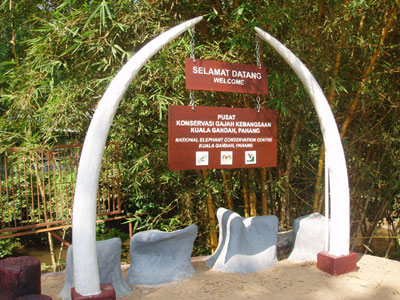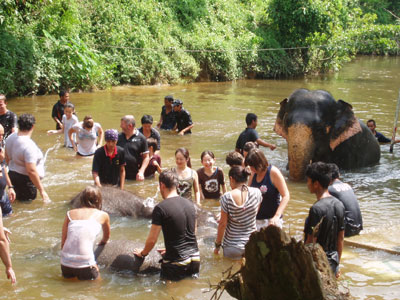National Elephant Conservation Centre - Kuala Gandah
Kuala Gandah Elephant Centre
 The Department of Wildlife and National Parks (DWNP) established Kuala Gandah Elephant Conservation Centre in 1989. The centre is the base for the Elephant Relocation Team, which began the elephant translocation programme in 1974.
The Department of Wildlife and National Parks (DWNP) established Kuala Gandah Elephant Conservation Centre in 1989. The centre is the base for the Elephant Relocation Team, which began the elephant translocation programme in 1974.
The only one of its kind in Malaysia, the team is dedicated to locating, subduing and translocating elephant from areas where their habitats were enroached by plantations or other human development, to other suitable habitats throughout the Peninsular such as Taman Negara. Over the years our team has help to prevent the further decline of the elephant population by relocating more than 500 wild elephants.
Beside being the base for translocation team and a home for a number of residents and orphaned elephants, Kuala Gandah also aims to promote public awareness of the elephant's plight in Malaysia and to support research into elephants translocation and conservation. Visitors are welcome throughout the year to ride the elephant within the centre, help wash them in the nearby river and participate in feeding them.
|
Visitors washing the elephant body |
Visitors enjoy washing the elephants |
The centre also strive to educate the public about the importance of habitat and environmental preservation. Visitors are encouraged to view a video on elephant translocation and special programmes can also be arranged for school groups. A regular visitors' programme is available; please refer to the Visitors Timetable.
The Elephants at the Centre
Presently, Kuala Gandah houses a number of elephants which were brought in from Thailand and Myanmar. The elephants were trained and used in translocation exercise of wild elephants in problem areas throughout Peninsular Malaysia. The centre also looks after orphaned elephants to ensure their continued servival.
The Asian Elephant
Currently, the Asian elephant is listed as a critically endangered species, with less that 40,000 wild elephants in Asia and a maximum of 1,200 wild elephants in Peninsular Malaysia. Protecting the Asian elephants help safeguard thousand of other species within its habitat. The elephant creates vital natural pathways by knocking over trees, allowing smaller wildlife to feed, as well as dispersing plant seeds in its dung. However, due to habitat loss, elephants are forced to look for food in converted forest areas such as plantations, where they raid crops on a massive scale. This is why the translocation team has such a dire need to move these elephants, to prevent them from otherwise being shot by farmers, or simply die of starvation.
No comment found.


